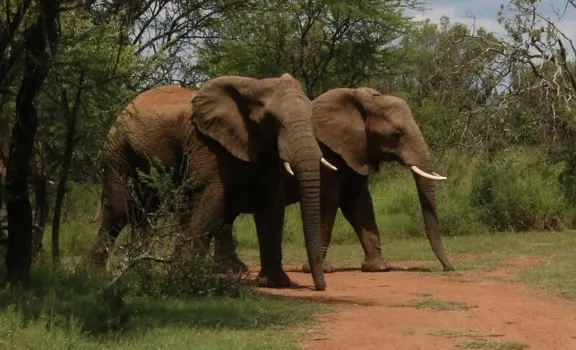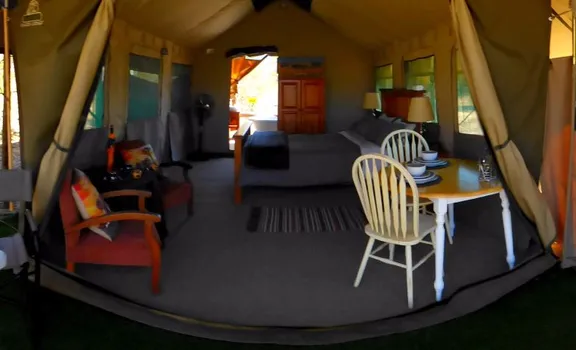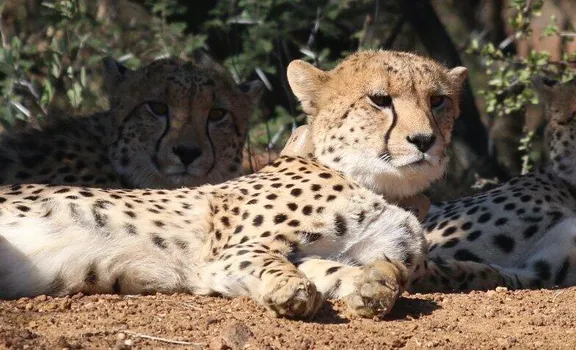What the Wildebeest Taught Me About the Art of Confused Confidence
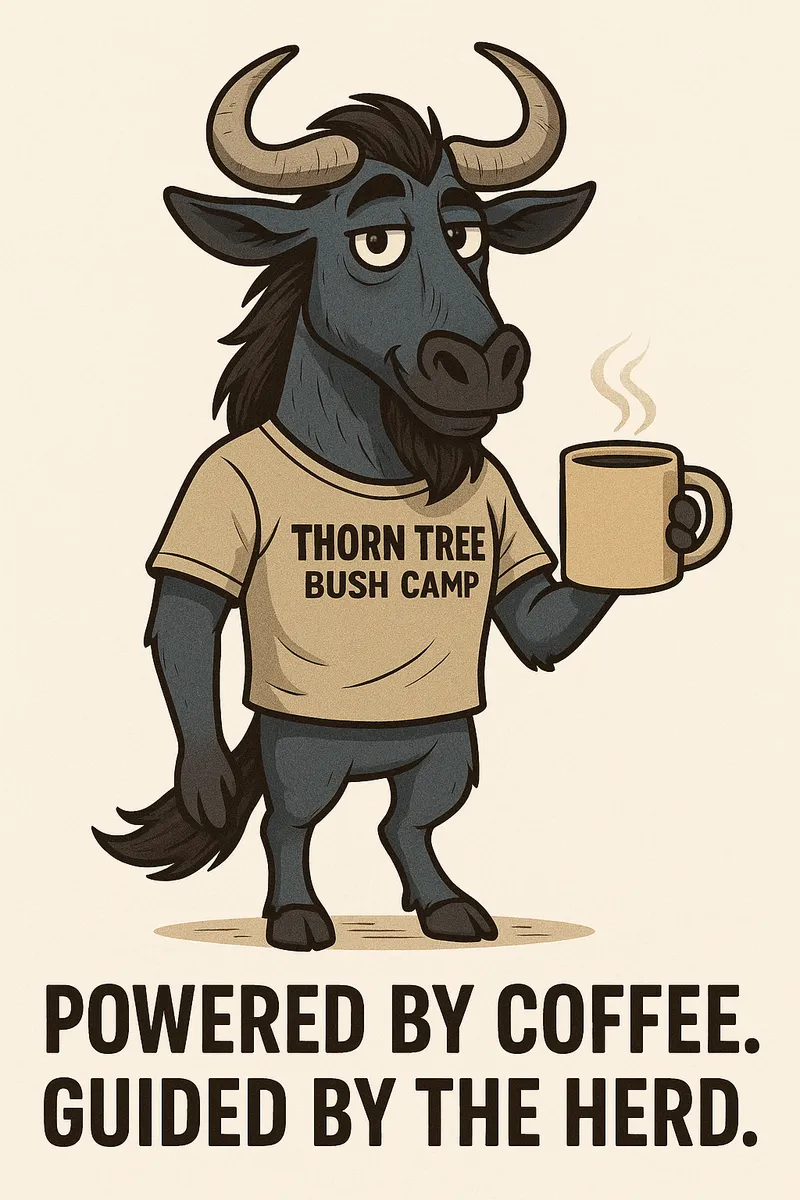
They’re not the prettiest antelope in the veld…
It was an early winter morning at Thorn Tree Bush Camp. I was sitting under the gazebo at the poolside, coffee in hand, soaking up the gentle warmth of the sun’s first rays as they spilled over the bush.
Through the soft mist still clinging to the grass, a herd of blue wildebeest ambled past. Their breath hung in the cold air, their movements slow but purposeful, punctuated by the occasional flick of a tail or sideways glance. Watching their behaviour and little interactions, I couldn’t help but think what an unusual yet fascinating animal they are.
I’ve often heard it said that the wildebeest looks like it was put together from all the spare parts left over after the other animals were finished. But sit quietly, watch, and you’ll notice amazing behaviours — subtle signals, coordinated turns, and an unspoken unity that somehow keeps them thriving in a world full of predators.
They sound like a saxophone that’s had a long night. They panic often, stare awkwardly, and gallop like they’ve just remembered they left the stove on. Their facial expressions are a mix of mild confusion and “Did you hear that?” — even when nothing happened.
And yet — somehow — the blue wildebeest has made it work.
In fact, they’ve not only survived Africa’s harshest conditions and deadliest predators, they’ve become one of its most important players. They shape the land with their grazing, feed everything from lions to hyenas, and even help decide the direction of the great migration — all while looking like they were designed by a committee arguing over whether it was meant to be a cow, a horse, or a badly parked buffalo.
So when that herd passed the boma at Thorn Tree Bush Camp last week, looking like they’d misplaced their to-do lists but were sticking to them anyway, I realised: there’s more wisdom here than we give credit for.
Here’s what the wildebeest taught me about the art of confused confidence.
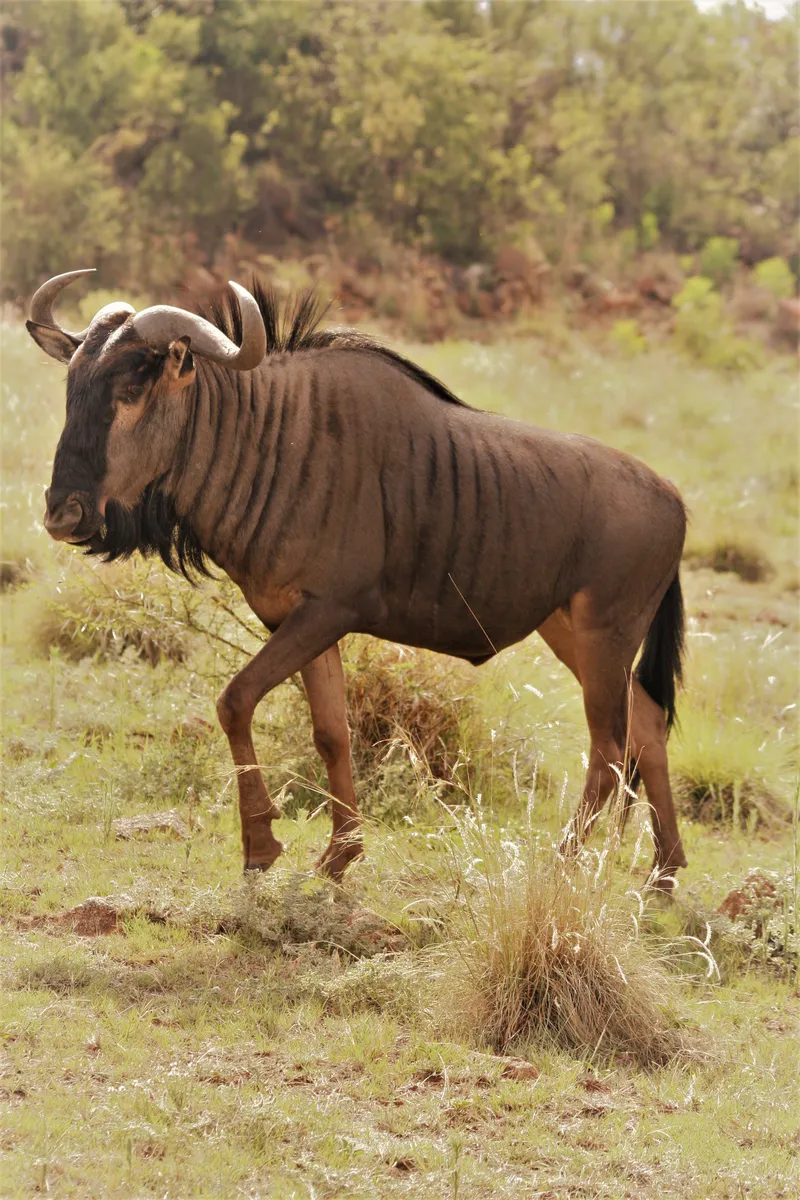
If in Doubt, Just Keep Moving
Wildebeest don’t wait around to make decisions. Something rustles in the grass? Off they go — in unison — legs flailing, tails twitching, snorting like a committee of nervous accountants during a tax audit.
Is it a lion? A lizard? A leaf? Doesn’t matter.
What matters is movement. In the bush, hesitation is a gamble you can’t always afford to take. By the time you’ve worked out whether that flicker in the grass is a puff adder or a passing breeze, you might already be lunch.
The wildebeest’s approach? Act first, analyse later. And if you look a bit ridiculous in the process, so be it — better silly and safe than smart and supper.
Bushveld Takeaway #1: When in doubt, move. The rustle might be danger… or just the wind. Either way, you’ll be alive to find out.
Confidence Doesn’t Require Clarity
Wildebeest are the kings of purposeful uncertainty. They might not know exactly where they’re going — but they absolutely look like they’re going somewhere important. Heads down, shoulders set, hooves drumming like they’re late for a meeting only they know about.
And here’s the lesson: you don’t have to have the full map before you start the journey. Sometimes, clarity only comes after you’ve taken the first step. Or, in the wildebeest’s case, the first fifty gallops.
Life doesn’t always give us straight answers, but if you move forward with conviction — and maybe a slightly indignant snort — you’ll often end up exactly where you need to be.
Bushveld Takeaway #2: You don’t need the full map — just enough confidence to start walking… or galloping.
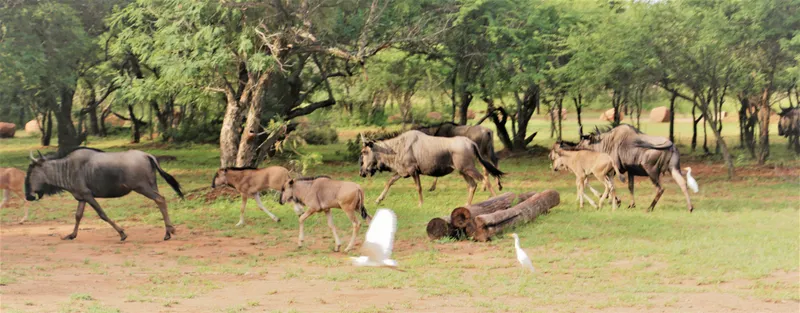
Your Tribe Is Your Superpower
The wildebeest doesn’t go it alone. They travel in herds so tight and fluid that from the air they look like rivers of muscle and dust, flowing across the plains.
But here’s the clever bit — they don’t just stick with their own. They team up with zebras, creating a partnership so practical it should be in a business textbook. Zebras have sharper eyesight for spotting predators; wildebeest have a better nose for fresh grass. Together, they’re nature’s ultimate co-op.
It’s survival through collaboration, and it’s messy, noisy, and utterly effective. It’s also a gentle reminder that your own chances in life often improve when you run with a good crowd.
Panic is Temporary. Purpose is Persistent.
Yes, wildebeest panic. Spectacularly. A sudden snort will set off the whole herd like dominoes — running, wheeling, dust flying everywhere.
But here’s the bit I admire: they recover quickly. They’ll bolt across half the veld, stop abruptly, glance around as if to say, “Well, that was unnecessary,” and then drop their heads to graze like nothing happened.
No shame. No apology. Just back to business. That’s resilience — the ability to keep your main purpose front and centre, no matter how many false alarms life throws your way.
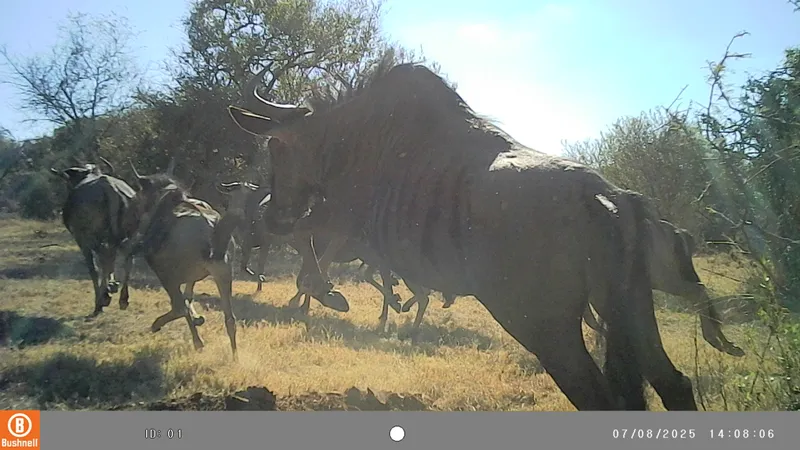
You Can Be Funny-Looking and Still Be Essential
Let’s be honest — the wildebeest is no beauty queen. With the shoulders of a buffalo, the beard of a goat, and the expression of someone who’s just woken up from a confusing nap, they’re a walking contradiction.
And yet… this awkward-looking grazer is a keystone species. Without them, the grasslands would change, predator numbers would dwindle, and the ecosystem would lose one of its most important cogs.
Bushveld Takeaway #3: Your quirks are not flaws. In the right ecosystem, they’re your superpower.
Moral of the story? Your quirks might just be your greatest contribution. It’s okay to be the odd one out — especially if your oddness makes the world work better.
Grunt Proudly. Even If You’re Off-Key.
The wildebeest call isn’t exactly sweet music. It’s more of a nasal, drawn-out gnuuuh, like a motorbike that refuses to start.
But they belt it out anyway. Loudly. Repeatedly. Because that’s their voice — their signal to the herd, their way of saying “Here I am.”
So here’s the takeaway: make your noise. Even if it’s awkward. Even if someone rolls their eyes. There’s only one wildebeest grunt in the whole bushveld — and it’s worth hearing.
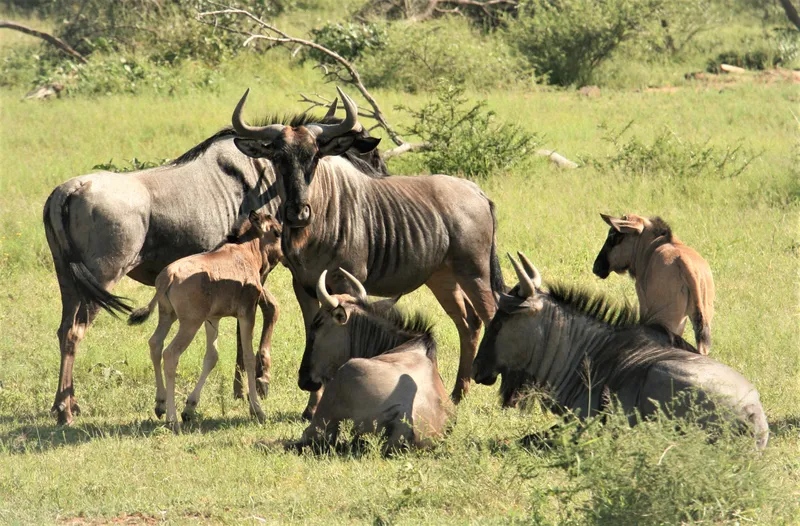
Final Reflection: The Beauty of Blundering Onward
The blue wildebeest is living proof that you don’t have to be perfect to belong. They thrive in the wild with a mix of enthusiasm, organised chaos, and the strength of community. They may look a little lost at times, but they’re never truly stuck. They might spook easily, but they always find their way forward. They may not win any beauty contests, but they fit perfectly into the grand design of the bushveld.
So when life leaves you tangled in its long grass, pausing at every rustle, take a page from the wildebeest’s playbook:
- Run when you need to.
- Stay close to your herd.
- Snort if it helps.
- And graze like you’ve earned your place.
Because survival isn’t about flawless plans — it’s about the stubborn courage to keep going. And the wildebeest? They’ve turned that into a lifestyle.
Next time you visit Thorn Tree Bush Camp, make time to simply sit — perhaps under the gazebo or beside the pool — with a warm coffee in hand and the bush stretching out before you. Watch the wildebeest graze, mingle, and occasionally fumble their way through the day. Notice their quiet signals, their unity, and how they flourish despite their quirks. And keep an eye out for the rest of the bushveld’s cast — from watchful zebras to cheeky squirrels. You might be surprised at just how much the wild can teach you, if you let it.
